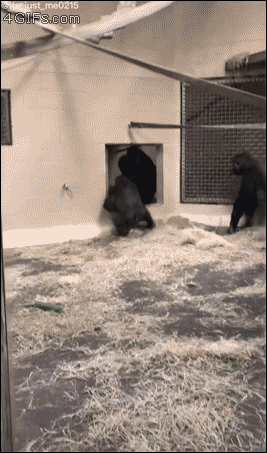#ABSOLUTE UNIT
Text
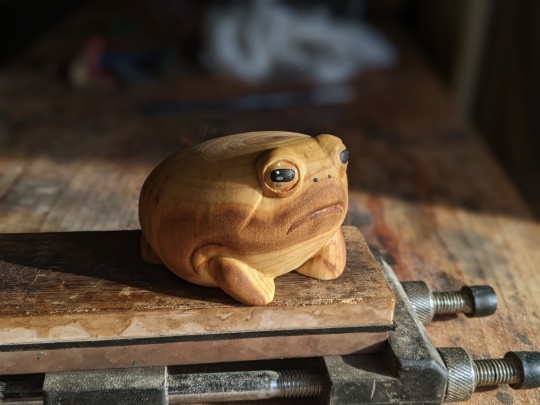



Mood
6K notes
·
View notes
Text
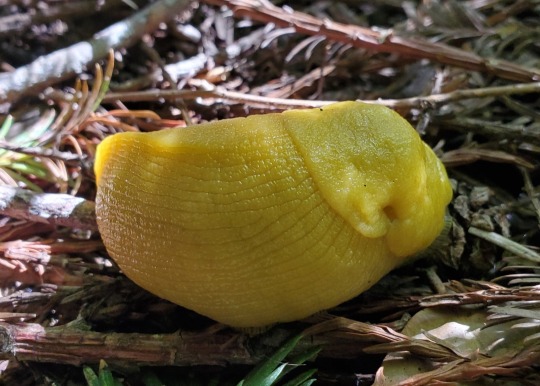

Is a chonk. Probably the chonkiest nanner I've ever seen 🍌
(banana slug in Northern California redwood forest)
#chonk#oh lawd they comin#what a chonk#absolute unit#heckin chonker#banana slug#nanner#🍌#nature#nature photography#animals#gastropods#thick and juicy#redwood forest
3K notes
·
View notes
Text
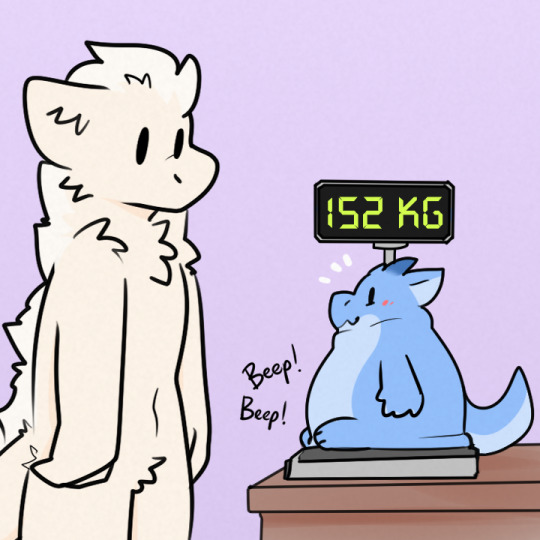
i think my kobold is seeing multiple dragons
643 notes
·
View notes
Text
It's big, it's strong, its scaly, it's this week's Wet Beast Wednesday topic! An arapaima, also known as a pirarucu or paiche, is any of four species of fish in the genus Arapaima in the order of bony-tongued fish. There is som ongoing debate about the classification of the species, so to keep thing simple, I'm going to use the most common species names of Arapaima gigas (the type species and most well known, and the one with the most confusion about its classification), Arapaima agassizii, Arapaima leptosoma, and Arapaima mapae. Because A. gigas is the most well-studied of the species, unless I say otherwise you can assume everything I say in this post applies to it.

(image: an arapaima)
Arapaimas are bony fish that retain several primitive traits, causing them to sometimes be identified as "living fossils". They are most notable for their size, with A. gigas being a contender for the largest freshwater fish in the world. The maximum recorded size for one was 3.7 meters (10 ft) and 200 kg (400 lbs), but most get to around 2 meters (6.6 ft) long and 200 kg (440 lbs). That average length is decreasing as overfishing of the largest individuals is resulting in a selective pressure for smaller sizes. In addition to their size, they are extremely strong and can move fast if needed. Arapaima are fully capable of leaping out of the water if disturbed or they feel their current pond in unsuitable. Because of their strength, specimens in captivity must be handled with care as they can easy break bones if they slap someone. They live in rivers and lakes in South America, where they are often the top predators.
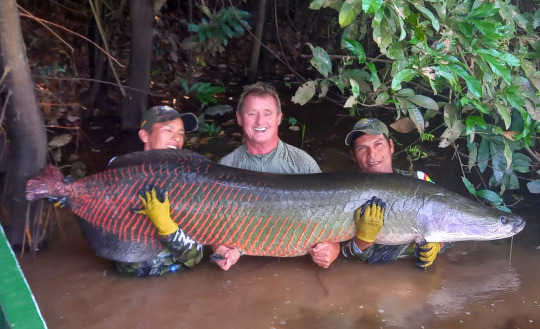
(image: several anglers with an arapaima)
Arapaimas are obligate air-breathers and will drown if they can't get to the surface to breathe. This is accomplished with a specialized swim bladder. The swim bladder is filled with highly vascularized tissue, letting it act like a lung. This pseudo-lung opens into the mouth using a modified gill arch known as the labyrinth organ. Arapaima gills are too small to sustain them, but they can supplement their oxygen intake with the gills. Juveniles are born exclusively using their gills and transition into air-breathers shortly after hatching. Arapaimas can survive up to a full day out of the water. They typically surface to gulp in air every 15-20 minutes. Breathing makes a loud gulping sound that anglers use to target them.
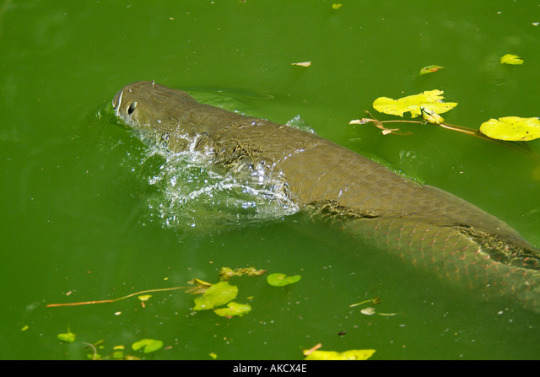
(image: an arapaima at the surface)
Because of their ability to breathe air, arapaimas are top predators in low-oxygen environments. Non-air breathing fish are forced to slow down in water with low levels of dissolved oxygen as they can't get enough oxygen through their gills. Since Arapaimas breathe air, they can easily chase down lethargic smaller fish. They are especially potent predators during the low season, when water levels lower. A combination of rotting vegetation reducing oxygen levels and ponds getting cut off from rivers and losing a supply of oxygen lets the arapaima reign supreme. Arapaimas are primarily predators that feed on smaller fish, though they will hunt other types of animals and eat fruits and seeds. Even land animals aren't safe as arapaimas have been known to launch themselves out of the water to catch animals near the shore. A combination of sharp teeth and their bony tongues are used to debilitate prey.
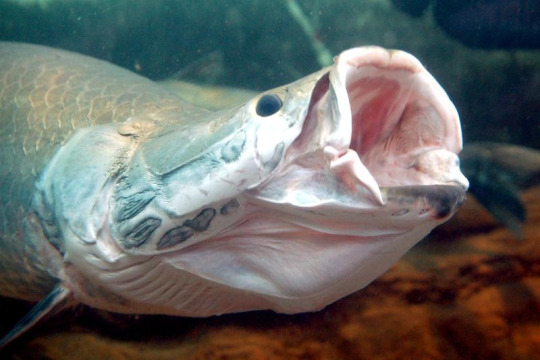
(image: an arapaima with its mouth open)
Not content with powerleveling their attack stat, arapaimas also have excellent defense. Their scales have been compared to bullet proof vests. Each has a hard, mineralized outer layer over multiple layers of collagen fibers. These layers are all oriented at an angle to each other to provide extra strength. This orientation of layers is called a Bouligand-type arrangement and is similar to how plywood is assembled. The harder outer layers and flexible inner layers work together to allow for both strength and flexibility. These scales help provide protection form large predators such as caiman and small threats like biting piranha. They also like provide protection from other arapaima, as the fish are aggressive and will fight each other.

(image: a diagram showing the composition of arapaima scales. source)
You probably wouldn't expect a swimming tank of an animal to be a good parent, but you'd be wrong. Arapaimas work together in mated pairs to build nests for their eggs, then cooperate to guard the nest. Once the eggs hatch, the male will practice mouth brooding, keeping his young safe in his mouth. The female will also help by patrolling the area around the male to ward off predators. They secrete pheromones from their heads to ensure the young don't swim too far away. Eggs are laid either in in the low season or as water levels are starting to rise, ensuring that the young become independent during the high season.
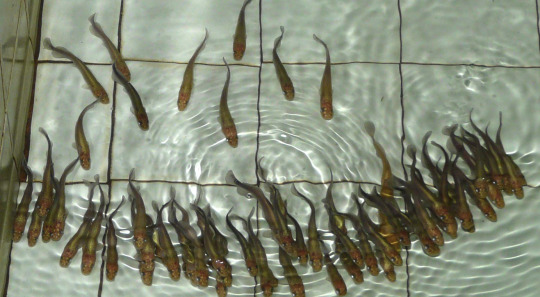
(Image: baby arapaimas)
Arapaima are classified as "data deficient" by the IUCN. This means there isn't enough data to properly assess their conservation needs. They are known to be threatened by overfishing. Arapaima make up a large part of the diet of many South American populations. Habitat loss and pollution are also believed to threaten them. They have been introduced to many areas out of their native range and are an invasive species in placed like Florida, Malaysia, and India.
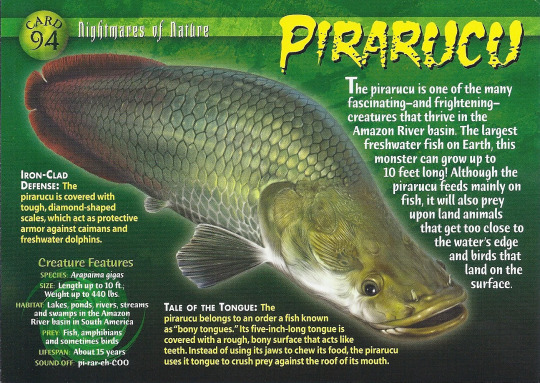
Does anyone else remember these cards? (image: the arapaima card from Weird n' Wild Creatures)
#wet beast wednesday#fishblr#fish#biology#zoology#ecology#animals#aquatic biology#animal facts#absolute unit#arapaima#pirarucu#paiche
1K notes
·
View notes
Text

660 notes
·
View notes
Photo
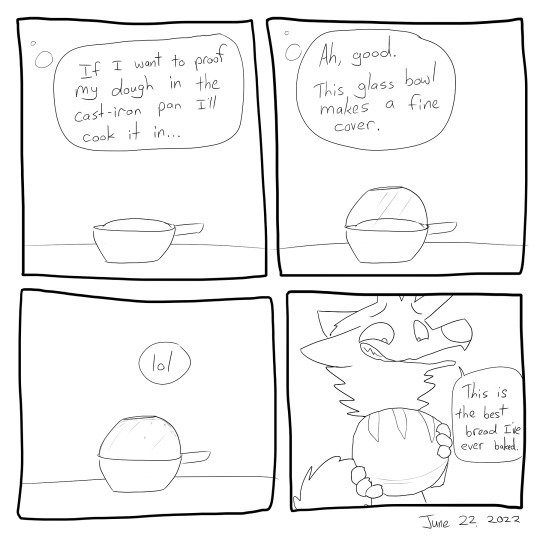
Dogstomp #2725 - June 22nd
Patreon / Twitter / Discord Server

494 notes
·
View notes
Note
Lobter ?

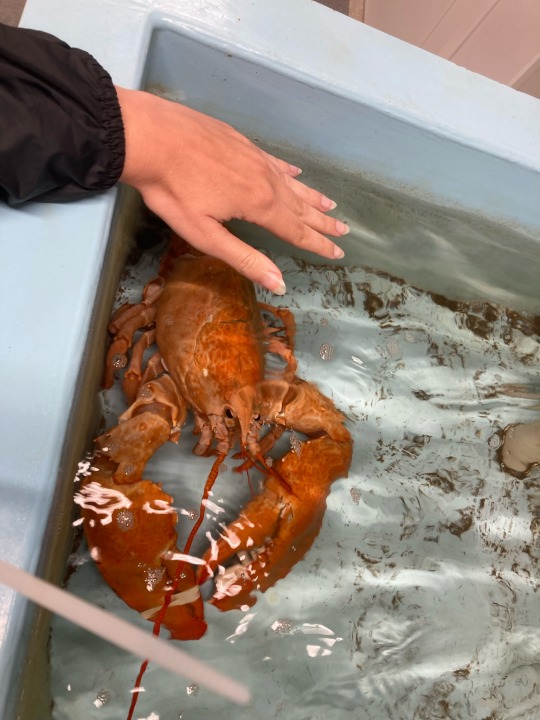
Look at this huge orange guy the lobster researchers have in the lab
173 notes
·
View notes
Text

Round borb
2K notes
·
View notes
Text

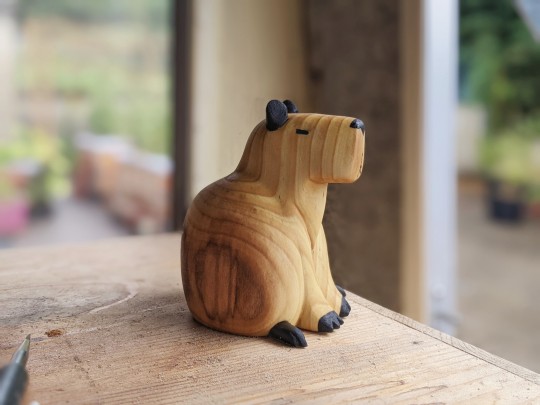

New capybara just dropped
7K notes
·
View notes
Photo
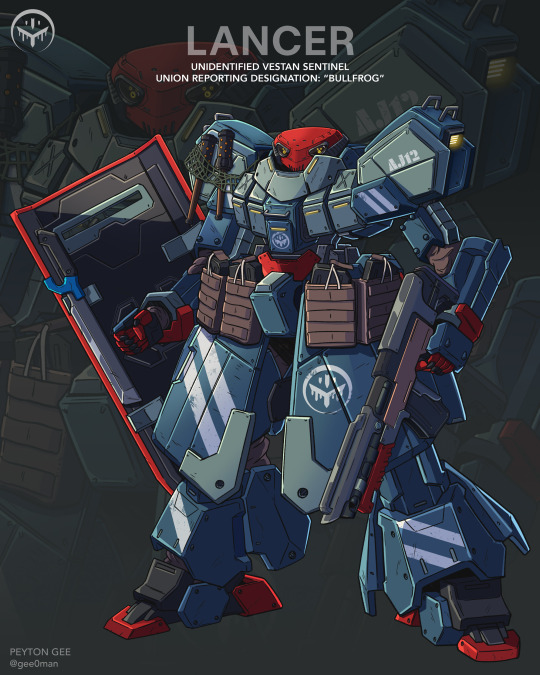
Continuing the Solstice Rain #mecha art done for Lancer RPG. Before it was identified, Union boots on the ground called the Vestan armored bruiser that led their formations the Bullfrog. A combo of its shield and leg mounted hover jets make it a nasty close range bully.
The Bullfrog belongs to the Vestan Sovereignty, an antagonistic faction in the Solstice rain supplement. They’re a familiar story. An authoritarian nation on the verge of loosening up only for the militant reactionaries to tighten their grip again. Union’s arrival on Cressidium serves as the perfect catalyst to reignite old dreams of conquest.
Every GM needs its Zaku to be locked in eternal struggle with. I imagine in universe, armchair generals and rivet counters will argue about the respective qualities of the [G] Type Everest and Bullfrog during the Cressidium conflict for years to come.
I designed the Bullfrog in concert with my Everest variant. Whereas I looked at Gundam and Armored Core for the [G] Type, I prayed at the altar of Kazuhisa Kondo for the Bullfrog. I have always wanted to design a Kondo-inspired absolute unit.
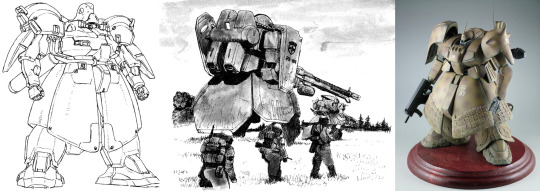
Giant armored skirt and shoulders to give it a brutish, imposing physical profile. These types of chunky forms give it both a sense of mass but also reflect the Vestan’s desire to punish and impose its will on others. It’s not merely enough to occupy the space, it must make everyone around it uncomfortable and vulnerable. Again, a bully.
556 notes
·
View notes
Text
I haven't covered any pinniped pals for Wet Beast Wednesday yet, so for my first one I'm going big. Really big. Elephant seal big. Elephant seals are not only the largest of all pinnipeds, they are the largest of all carnivorans and the largest marine mammals that aren't cetaceans. There are two species: northern (Mirounga angustirostris) and southern (Mirounga leonina), with the southern species being the larger of the two.
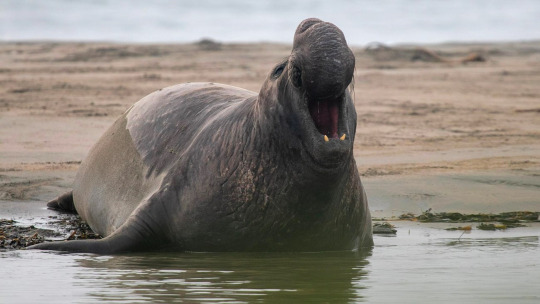
AAAAAAAAAAAAAHHHHHHHHH! (image: an elephant seal bellowing)
Elephant seals are true seals (as opposed to sea lions and walruses), meaning they lack external ears and their hind legs have fused into a sort of pseudo-flipper that allows for highly efficient swimming but is of little use when maneuvering on land. While it is common among pinnipeds for males to be larger than females, elephant seals exaggerated that with one of the most extreme size differences between sexes. Females of both species range from around 350 to 900 kg (880 to 1,980 lbs) and 2.5 to 3.6 m (8.2 to 11.8 ft) in length. Male northern seals average between 1,500 to 2,300 kg (3,300 to 5,100 lbs) and 4-5 m (13-16 ft) while southern males break the scale at 1,500 to 3,700 kg (3,300 to 8,200 lbs) and 4.2 to 5.8 m (14 - 19 ft). The southern species has the largest mass difference between sexes of any mammal, with the males averaging 5-6 times the weight of the females.

(image: male and female elephant seals chillaxing on a beach)
In addition to the size difference, the other major form of sexual dimorphism is that the male has his nose elongated into a proboscis. This snout serves two major functions: it amplifies the roars of the male allowing him to be remarkably loud and it traps and reabsorbs moisture when he exhales. This is important as the seals do not eat or drink when on land and recapturing moisture lets him stay hydrated.
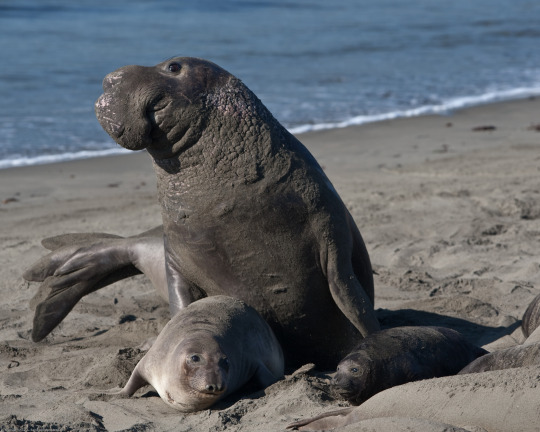
(image: a male[top], female [bottom left] and juvenile [bottom right] northern elephant seal)
Seals are adapted to spend the vast majority of their lives in the water and elephant seals are no different. They spend around 80% of their lives in the water and have many adaptations to aid in their lifestyle. Like most marine mammals, they have a thick layer of fatty blubber that preserves heat in cold water, reduces drag, and provides buoyancy. Like other seals, they can slow their heartbeats and redirect blood flow to the core of their body to avoid losing heat. Another seal adaptation is that veins returning blood to the heart grow near arteries carrying blood from the heart. This allows the cold returning blood to leech some heat from the arteries to avoid cooling down the body's core. They have a lot of blood to store oxygen, allowing for long dives. Elephant seals dive deep (averaging 300-600 m but occasionally much deeper) when searching for food. Females typically go on deeper but shorter dives than males. They can hold their breath for over 100 minutes, longer than nay non-cetacean mammal.. Their eyes are highly adapted to low-light conditions and their whiskers can sense motion in the water, both things that aid in finding food. Elephant seals are very opportunistic predators and will eat a large variety of fish and cephalopods.

(image: a female elephant seal swimming)
The 20% of time not spent at sea is mostly taken up by two yearly periods: the molting and breeding seasons. In both cases, the seal will haul out onto the beach and will not eat or drink until it has finished. Molting season lasts about a month and usually occurs in summer. Elephant seals undergo what are called catastrophic molts, where they not only shed and regrow their fur but their outer layer of skin. During the regrowth of their skin, extra blood has to be directed toward it. In the water, this would cause too much heat loss, so it must be done on land. The skin sheds in large patches and not all at once, resulting in molting seals having a ragged appearance.
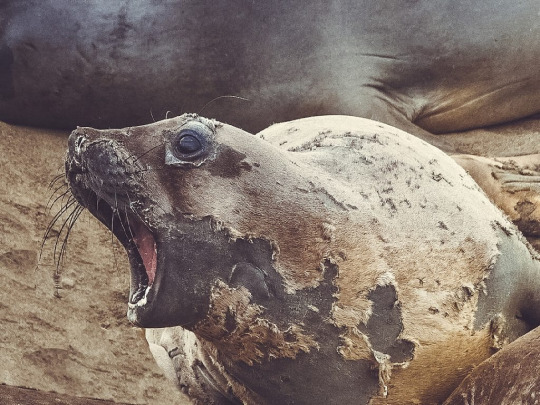
(image: a seal mid-molt)
The longer and more famous time on land is breeding season. In early spring, males will arrive on beaches and fight each other for dominance. In time, a few alpha males will claim most of the beach. These fights last even after the females arrive. Fights are very dramatic, involving posing and bellowing. If one male does not submit, they will fight by biting and slapping each other with their heads. Fights are rarely fatal, but are frequently bloody. Males have thicker skin on their chests to protect them during fights. Alpha males claim the right to mate with the females. Other males are forced to the outskirts of the beach, where they try to mate while the alpha is distracted. Some males will become betas, who help the alpha patrol his territory and drive off competing males. These betas will often try to mate while the alpha is distracted. Only the largest and strongest males can claim alpha status, and usually late in life when they have grown to their largest. After the females arrive, mothers will give birth to their pups. After birth, the female uses unique vocalizations so her pup can always recognize her. They nurse pups for up to 28 days while the males continue to fight. Elephant seal milk is extremely high in fat content, with up to 50% of the milk being fat, compared to 3.5% for cows. Some mothers may adopt the pups of others, especially if their own pup died before weaning. Weaning is very abrupt, after which the females will mate and the adults will return to the sea. The pups are left on land for up to 10 weeks, where they must learn how to swim and hunt while subsisting off the energy stores they built up while nursing. Juvenile mortality is high, with up to 50% of pups dying before reaching maturity. Adults can lose a third of their weight during breeding season.
youtube
(video: a clip from the BBC documentary Seven World One Planet about males fighting fro dominance. warning: there is blood)
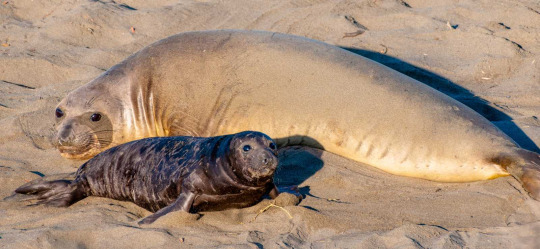
(image: a mother seal and pup)
A few pups are known as super weaners because they can grow exceptionally large during nursing. This is usually due to the pup being adopted by an additional female and therefore getting an extra dose of milk or it will steal milk from another pup. In a few cases, the mothers will just wait longer before weaning for unknown reasons. Average pups weigh between 110 and 160 kg (250 - 350 lbs) at weaning while super weaners can weigh up to 270 kg (600 lbs). They can put on so much blubber their ability to move becomes impaired. Super weaners are rarely observed again after leaving the rookery. It has been speculated that their excess blubber makes them exceptionally buoyant, reducing their ability to dive and making it harder to feed, leading to increased mortality.

(image: a chonky baby super weaner)
Both species of elephant seal were hunted to near-extinction in the 19th century as their blubber could be used to make exceptionally high-quality oil. After the hunting period ended, their numbers increased to the point both species are classified as least concern by the IUCN, though their populations have never risen to pre-hunting numbers and many areas that were historically occupied are now vacant. Genetic bottlenecks in both species has led to an increase in diseases and birth defects. El Nino is known to have a negative effect on northern seals by drastically increasing pup mortality, so this year was probably a bad one. One major limiting factor in their population growth is a lack of beaches to haul out on and many beaches they use are now protected by local laws or as UNESCO World Heritage Sites.

(Gif: a female versus a car. Round 1, fight!)
#wet beast wednesday#marine biology#biology#zoology#ecology#elephant seal#marine mammals#seal#seals#absolute unit#animal facts#cw animals fighting#chonky#Youtube
276 notes
·
View notes
Text
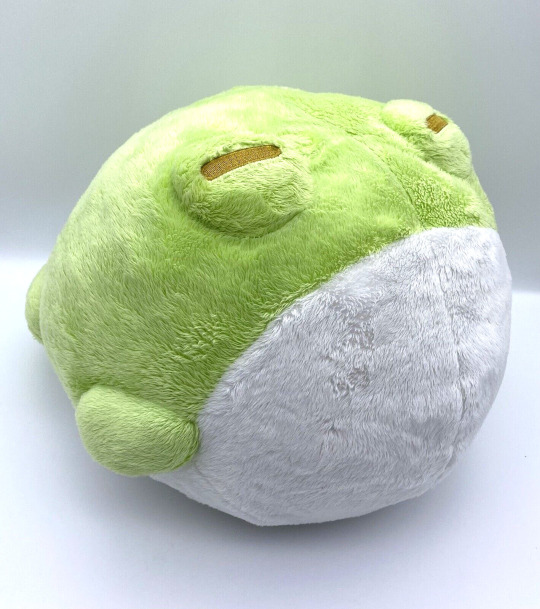
(source)
543 notes
·
View notes
Text


577 notes
·
View notes
Text

I forgot I had added this pure unit to my game and audibly gasped
#skyrim#skyrim se#jarl balgruuf#jarl ballin#skyrim mods#modded skyrim#skyrim modded followers#absolute unit#genuinely frightened the shite outta me
26 notes
·
View notes

